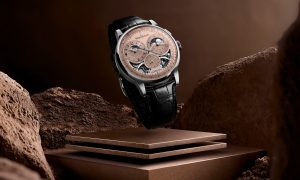This post was written by Helen Ong
In 2008, Melaka and Penang were inscribed as Unesco world heritage sites, a testament to their immense historical and cultural significance. Helen Ong navigates the port town and their architectural landmarks.
In July 2008, the citizens of Melaka and George Town had cause to celebrate. They were jointly declared UNESCO World Heritage Sites because, according to the Nomination Dossier:
The cities and ports of Melaka and George Town are the products of 500 years of trading and cultural contacts between East and West.
Immigration and influences from many parts of Asia and Europe have created a specific multicultural identity, manifested in both tangible and intangible heritage, such as areas for different ethnic groups and functions, religious pluralism, and streets lined with typical shophouses and religious buildings.
Melaka demonstrates the early stages of this history, originating in the 15th century Malay sultanate and the Portuguese and Dutch periods beginning in 1511; while George Town represents the British era from the end of the 18th century.
In George Town, the World Heritage Site comprises the core 110-hectare historic city centre situated on the north-east of the island, which is surrounded by the 150-hectare buffer zone. In Melaka, the 172-hectare World Heritage Site covers St. Paul’s Hill and the Historic Residential and Commercial Zone.
Melaka
Melaka bears influences from the various Asian and European forces which colonised it over the last five or six centuries. Arguably the most famous building is the imposing red 49,000-sq-ft Stadthuys – the old Municipal Town Hall and Civic Centre – which is now the home of the Museum of Ethnology, the History Museum and the Literature Museum. It is the oldest (construction began in 1641) and largest Dutch colonial building in Southeast Asia. In the courtyard stands the statue of Chinese explorer Admiral Zheng He (or Cheng Ho), erected in 2005 to mark the 600th anniversary of his voyages. The Cheng Ho Cultural Museum along Lorong Hang Jebat, formerly Jonker Street, which runs parallel to Jalan Tun Tan Cheng Lock, illuminates the great explorer’s connection to Melaka.
Admiral Zheng He brought with him the first Chinese to settle in Malaysia, who became known as the Peranakan (local-born or Straits Chinese). The men were called Babas and the women Nyonyas. With trade and commerce they became affluent, and many settled in the townhouses along Heeren Street (Dutch for “gentlemen”), renamed Jalan Tun Tan Cheng Lock. The Baba Nyonya Heritage Museum at No.48-50 is a wonderful and interesting way of finding more about this unique culture.
The Cheng Hoon Teng Temple, founded in the 1600s by Kapitan Cina Tay Kie Ki, claims to be the oldest traditional Chinese temple in Malaysia. Within are displays of old stone tablets called stelae which commemorate special events. The temple also, incidentally, owns the famous Bukit China (China Hill) burial ground situated to the south-east of Melaka town, believed to be the oldest and largest traditional Chinese cemetery outside China. The 12,500 graves include those of early Chinese immigrants and traders.
During early Melakan history, five great warriors served during the reign of Sultan Mansur Shah (1456-1477): Hang Kasturi, Hang Tuah, Hang Jebat, Hang Lekiu and Hang Lekir. Two mausoleums in Jalan Hang Jebat and Lorong Tukang Kuli supposedly belong to two of them, although this has apparently not been verified. Along Jalan Kota, at the foot of St Paul’s Hill in Bandar Hilir there are many museums which all tell their own story of Melaka’s rich history.
A visit to Melaka would not be complete without a walk through the ruins of A Famosa, a fortress built by the conquering Portuguese in 1511 which was later overrun and nearly destroyed by the invading Dutch and British.
Melaka’s churches also serve as reminders of its complex and colonial past. Among them are St. Francis Xavier’s Church (built in 1949) which overlooks most of the town, St. Peter’s Church (constructed in 1710 by the Portuguese) which is the oldest functioning Catholic church in Malaysia, and Christ Church (built in 1753) which is a testament to the region’s Dutch heritage.
To visit Melaka is to take a fascinating stroll through Malaysia’s history. For more information on the state’s attractions, visit. www.melaka.org.my.
George Town,Penang
George Town, Penang, was founded in 1786 by a trader for the East India Company, Captain Sir Francis Light, who used the settlement as a base for his commercial operations in the Malay States.
Like Melaka, George Town was awarded heritage status not just because of its unique status as a multi-cultural trading town but also its heritage architecture, of which, fortunately, many fine examples still exist. One notable example of colonial architecture is Fort Cornwallis, an imposing structure built by Indian convict labour out of bricks and stones in the early 1800s. Another colonial monument is the majestic 60-foot Queen Victoria clock tower, built in 1897 to commemorate the queen’s diamond jubilee.
Other heritage structures include banks, private residences, mansions, churches, temples and shophouses. A walk along the financial district of Lebuh Pantai (Beach Street) reveals a few interesting buildings which used to be or are still banks. The ABN Amro Building at No.9 was completed at the beginning of the 20th Century, and currently houses the Royal Bank of Scotland. No.43, designed by the first Chinese architect in Penang, was the Ban Hin Lee Bank Building. The bank was founded by philanthropist Yeap Chor Ee.
Halfway down, the Anson Bridge, named after a former Lieutenant Governor of Penang, Major General Archibald Anson, crosses the Prangin Canal and links Beach Street to Jalan C Y Choy (Bridge Street). In the 19th Century, it would have provided the main link between George Town and the surrounding vicinity.
Tucked away in a little corner of old George Town, a part of Penang’s history is still being lived on a daily basis: the Clan Jetties of Weld Quay. The sprawling settlement was built in the late 19th Century by Chinese labourers from the Fujian (Hokkien) province who had come to work in the then bustling docks. They settled down around the jetties and each eventually became a little village housing a separate clan. At its peak in the 1960s when Penang, then a free port, was a thriving harbour providing sufficient work, it was home to some four or five thousand inhabitants. Numbers have slowly dwindled to about three thousand or so in recent years.
Originally eight, six remain: the Lee, Lim, Tan, Yeoh, Mixed Clans and Chew Jetty. The latter is the oldest and, with over a thousand people, the biggest, and the only one prepared to allow outsiders in to have a peep at life as it has been lived for the past century. These wooden houses require constant and costly maintenance. A bit further along, the heritage Church Street Pier built in 1897 on the waterfront now houses a few popular restaurants.
The indigo-coloured Cheong Fatt Tze Mansion (www.cheongfatttzemansion. com) in Leith Street must be one of the most distinctive buildings in Penang. Named after the penniless Hakka Water Bearer who became one of the richest men in Asia, the sprawling mansion, spread over 56,000 sq ft, was built according to the principles of feng shui (geomancy) and reputed to be one of only two such buildings of its size outside China. The award-winning building is now a bed-and-breakfast “exclusive heritage home stay” for travellers.
Speaking of B&Bs, the elegant Eastern & Oriental Hotel (www.e-o-hotel. com) along Farquhar Street, affectionately known as the E&O, must be one of the most famous in Malaysia. Founded by Armenians the Sarkies Brothers, it started life in 1884 as two hotels, the Eastern and the Oriental. The two hotels were merged, creating one of the best hotels in Asia, boasting famous personalities who stayed there like Noel Coward and Rudyard Kipling. Also not to be missed is the spectacular Khoo Kongsi (www. khookongsi.com.my) clanhouse with its highly intricate and lavishly ornamented architecture. The structure was built in 1850 on Cannon Street by members of the Khoo clan, wealthy Straits Chinese traders of 17th century.
The Penang Heritage Trust conducts walking tours during which guests can explore the numerous architectural and cultural treasures of George Town. For more information, visit www.pht.org.my or call +604 264 2631 +604 264 2631.
+604 264 2631.
———————————————————————————————————
Source: Senses of Malaysia May-Jun 2013
Read more: Five Fabulous Architecture in Malaysia
What are your thoughts on this article? Let us know by commenting below.No registration needed.
















